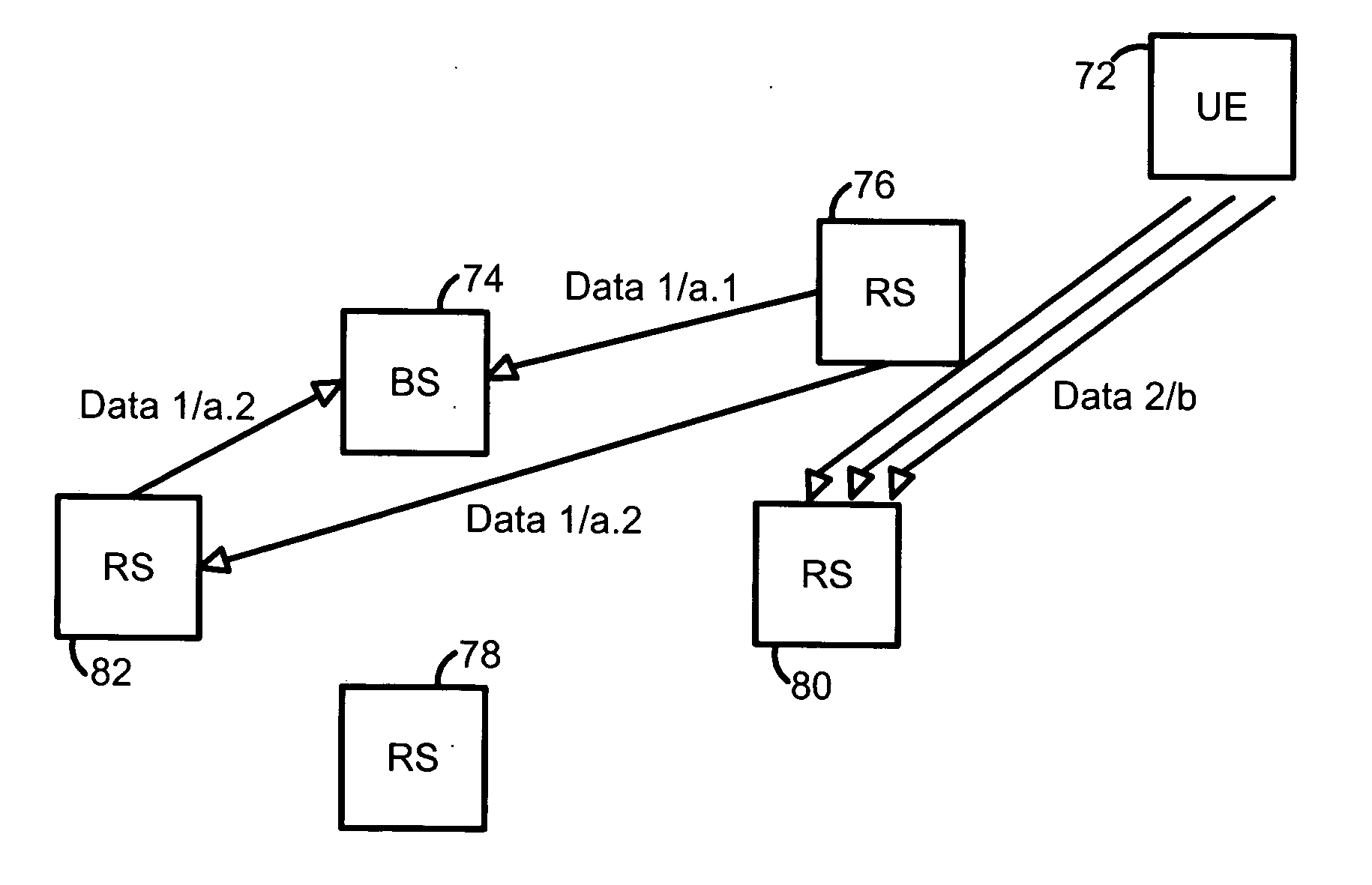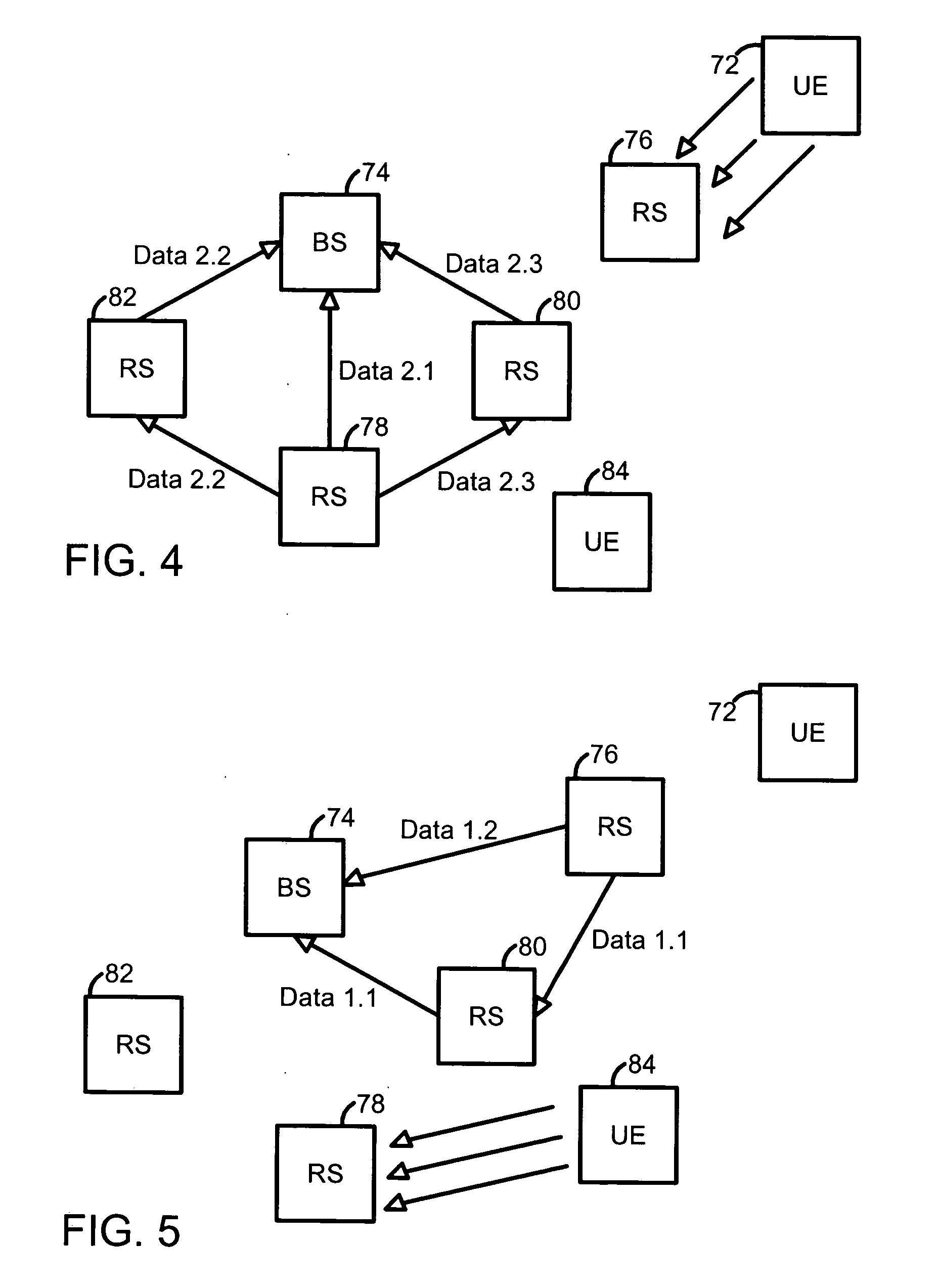Wireless multi-hop system with macroscopic multiplexing
a wireless multi-hop and multi-hop technology, applied in the field of high data rate wireless transmission systems and methods, can solve the problem that the capacity of the first radio interface may not be sufficient to reliably carry all communication between the rs and bs, and achieve the effect of reliably carrying all communication and sufficient communication capacity of the wireless link
- Summary
- Abstract
- Description
- Claims
- Application Information
AI Technical Summary
Benefits of technology
Problems solved by technology
Method used
Image
Examples
Embodiment Construction
[0022]FIG. 1 illustrates a communication system 10 having a user equipment (UE) 12, a base station (BS) 14, a relay station (RS) 16, and a core network 18. The base station 14 is connected to the core network 18 with a wire line 20 having wire line quality. The relay station 16 is connected to the base station 14 by a radio interface 22 and the relay station 16 is connected to the UE 12 by a radio interface 24. In some embodiments, the radio interface 22 and the radio interface 24 operate, at least in part, using the same frequency bandwidth. In at least some radio interfaces, a macroscopic multiplexing is utilized, where the relay station 16 is connected to the base station 14 both directly and via another relay station. In at least some other radio interfaces, a multiple input, multiple output (MIMO) transmission is used.
[0023]FIG. 2 illustrates a flow diagram 40 of exemplary operations in a wireless multi-hop system with macroscopic multiplexing. Additional, fewer, or different ...
PUM
 Login to View More
Login to View More Abstract
Description
Claims
Application Information
 Login to View More
Login to View More - R&D
- Intellectual Property
- Life Sciences
- Materials
- Tech Scout
- Unparalleled Data Quality
- Higher Quality Content
- 60% Fewer Hallucinations
Browse by: Latest US Patents, China's latest patents, Technical Efficacy Thesaurus, Application Domain, Technology Topic, Popular Technical Reports.
© 2025 PatSnap. All rights reserved.Legal|Privacy policy|Modern Slavery Act Transparency Statement|Sitemap|About US| Contact US: help@patsnap.com



